 Are you about to write your new e-book or start a research project? Are you planning to launch your white paper?
Are you about to write your new e-book or start a research project? Are you planning to launch your white paper?
Starting a new content project may be overwhelming given all the research, writing, and designing involved.
But apart from creating your product, you have other tasks to complete – competition and promotional research. This guide covers three key steps to take prior to announcing your content-based project.
1. Identify your future competitors
You know the kind of a project or maybe you’ve even started working on it. Do similar or related projects already exist? What can you learn from those and how yours will stand out?
Knowing your competitors is key to a successful launch. You need to know what already exists and how your content product is going to be better. You can also research your competitors’ promotional tactics and pick up some effective marketing ideas.
Figure out how your #content product will be better than what already exists, says @SEOSmarty via @CMIContent. Click To TweetBuzzSumo is always my first tool to check when it comes to any competitive research, especially for content-based projects. Head over to the Content Analyzer tab and look through content already available. I usually change the time frame to research content published within five years to get a broader overview:

You can filter results by engagement, which is especially helpful for fresh content. If you go a few years back, note the backlinks. Now that you know some of your future content competitors, you should do these two things.
Make friends with their promoters
Checking the backlinks is the best way to find who found that content useful enough to link to it. They may be interested in linking to your content as well. BuzzSumo allows you to check backlinks for any URL, so you can use the same tool.
Another idea is to check Top Sharers option in BuzzSumo that shows the most influential Twitter users who shared your competitor’s project:
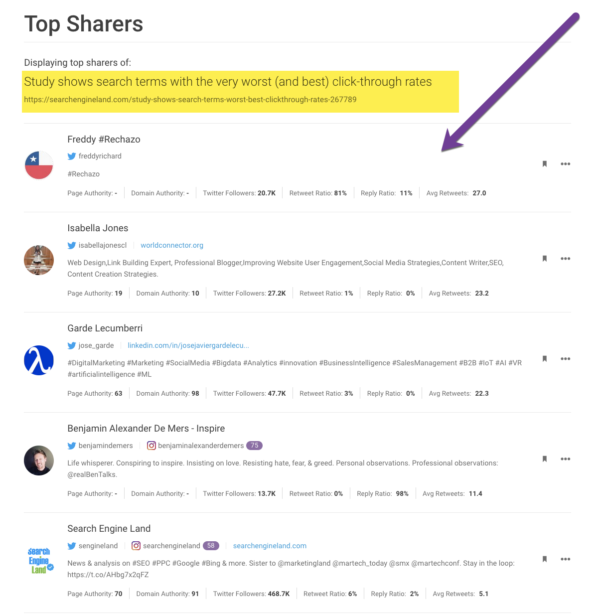
Create a separate Twitter list to later reach out to those people with your project. Interact with these people prior to launch to build some useful connections.
Use @BuzzSumo to find the top sharers of #content related to your topic. Interact with them prior to launch of your project, says @SEOSmarty via @CMIContent. Click To TweetCheck your competitors’ marketing channels
Is your competitor using a separate site to promote the content? What’s their conversion or engagement method? Are they using video on their landing pages? Do they sell their content-based project on Amazon or elsewhere? All these details could give you some cool ideas on where to market your product.
Set up tracking to keep an eye on your competitors’ landing pages. You’ll get notified once your competitor gets a new customer review or changes anything on their pages.
Visualping is the tool I use for all kinds of on-page tracking. It lets me select an area of a page to monitor. For example, instead of tracking the whole Amazon page, I can keep an eye only on the review section:
Use @visualping to keep an eye on your competitors’ landing pages, says @SEOSmarty via @CMIContent. Click To Tweet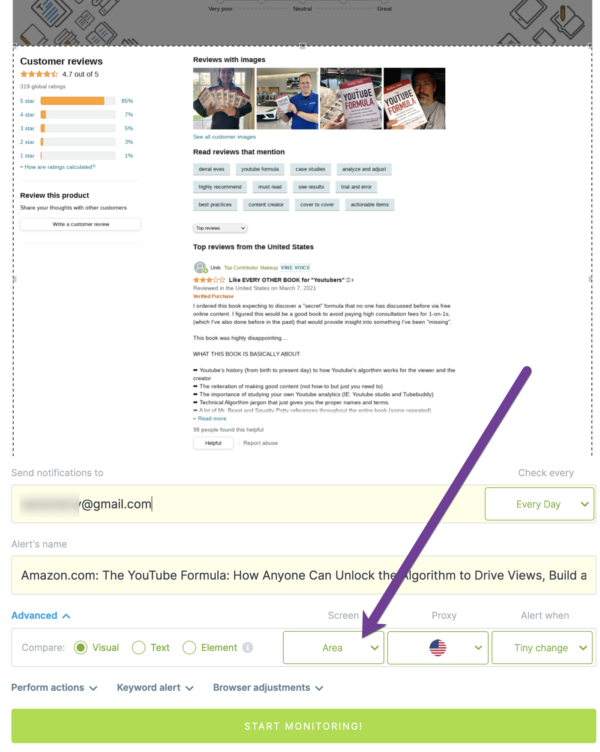
TIP: Content competitors aren’t always the same as your product or service’s competitors.
2. Find content gaps
For this step, find the direct competitors who published a similar project or have targeted the same keyword. To do this, search for your main keyword on Google, which is where you would want your content to rank when it’s live:
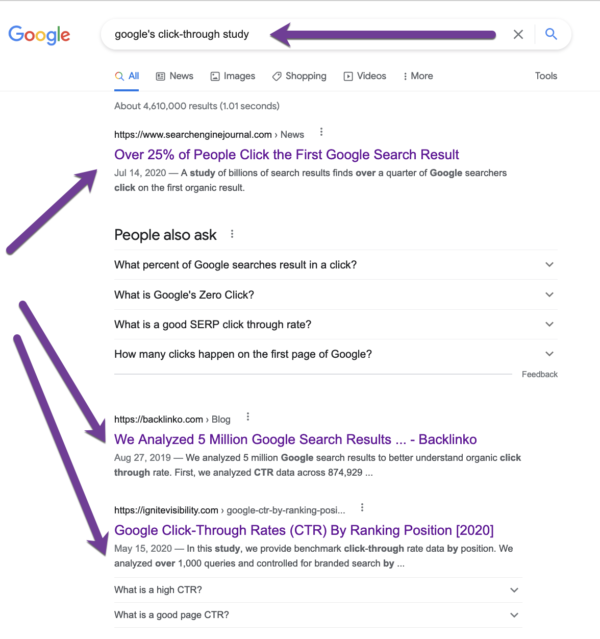
Run three to five of the URLs through the Ahrefs Content Gap tool, which identifies keywords for which two or more of your direct competitors are ranking. This information will help you optimize your landing page and content creation:
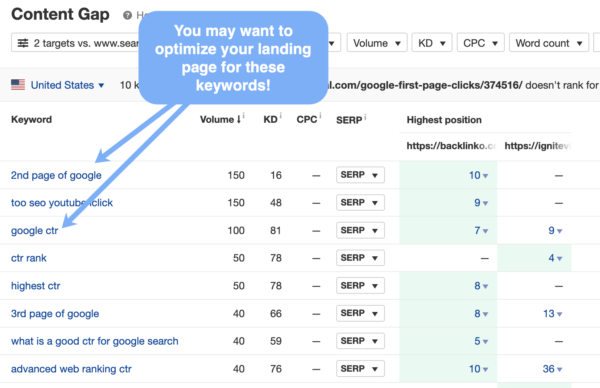
Bonus tip
When searching for your main keyword in Google, take note of other interesting tactics, including:
- Titles and meta tags – Are they engaging? How can you do better? (Note: The titles you see on the search engine result page may not be the same title the publisher used, so keep an eye on both.)
- Questions in People Also Ask boxes
- Rich markup, including FAQ schema as well as other types of rich snippets
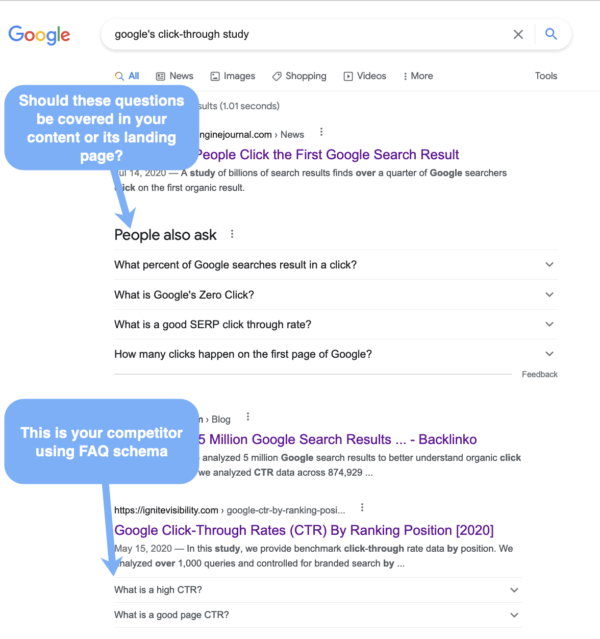
Another way to find keywords and concepts targeted by your competitor is to run their URL in Text Optimizer, which extracts semantics from any web document and identifies topics it is targeting:
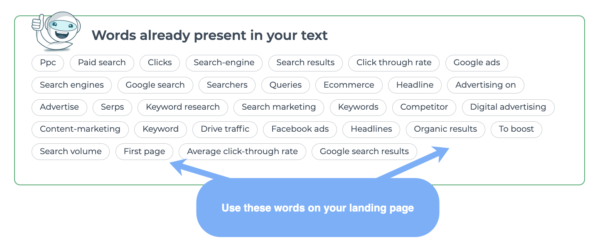
3. Name your new content project
If your new content is a large or long-term project, consider creating a distinct identity related to but not exactly the same as your brand. Your competitive research will give you some ideas on what might work well.
Some creators set up branded hashtags. Many marketers consolidate all the related content for the project on a one-page site. Others will register handles or profiles on Twitter, Instagram, YouTube, etc.
Namify lets you pick a name available on key social media sites so it’s consistent across channels:
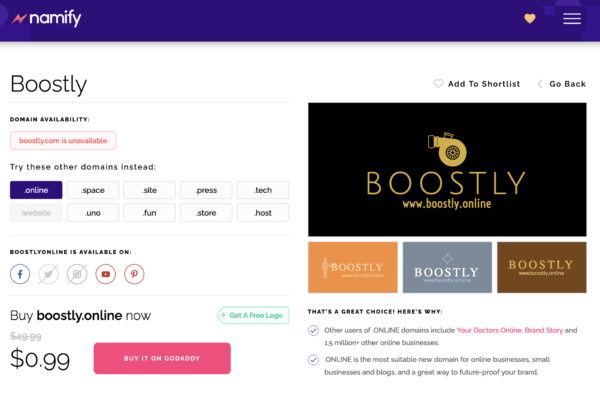
Do your homework
Knowing your niche is key to a successful launch but turning turn that niche and competitive research into an actionable plan is even more important. Keep an eye on your competitors or related projects, build friendships and partnerships, and create your SEO plan in time for a successful content launch.
Please note: All tools included in our blog posts are suggested by authors, not the CMI editorial team. No one post can provide all relevant tools in the space. Feel free to include additional tools in the comments (from your company or ones that you have used).
Cover image by Joseph Kalinowski/Content Marketing Institute

